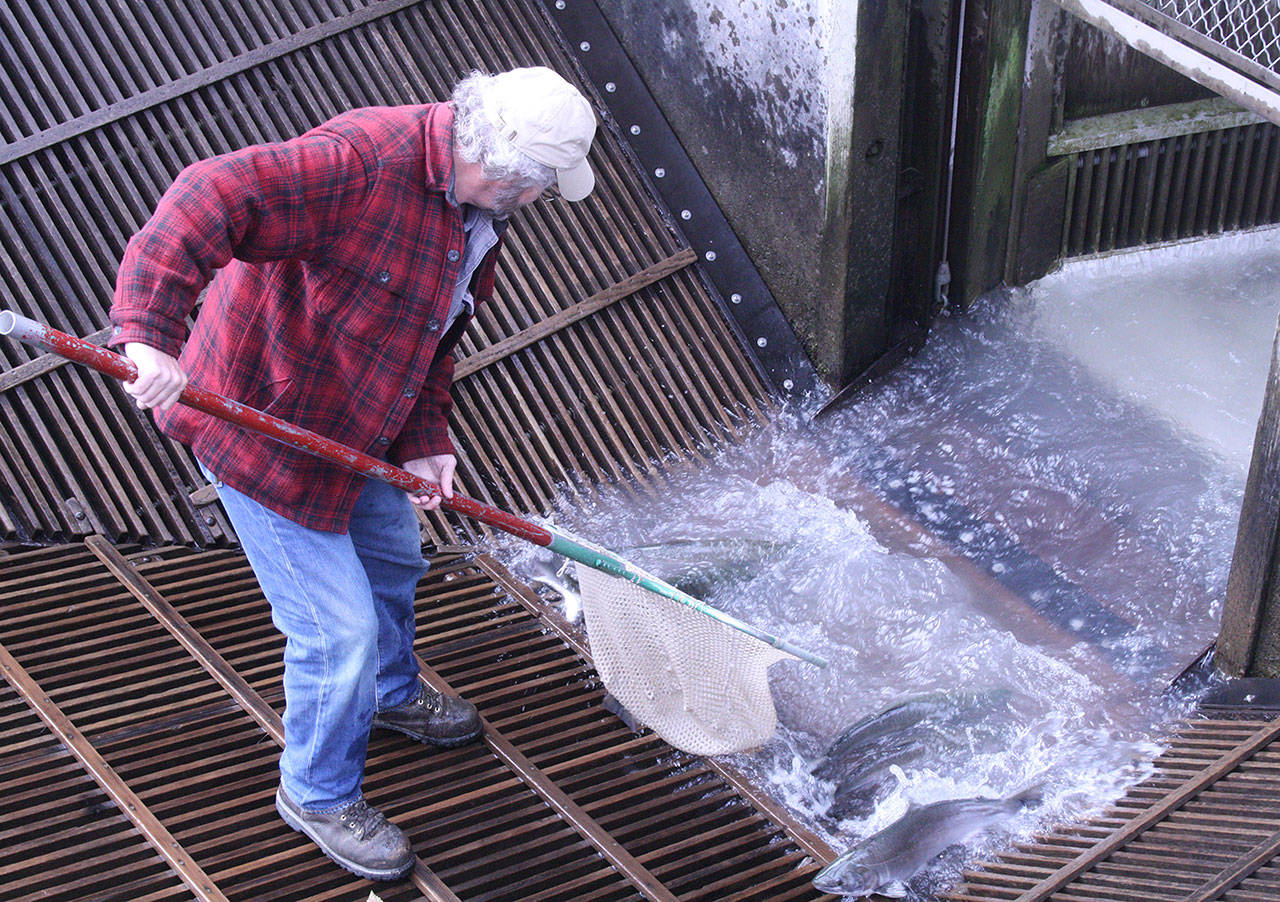When something can truthfully be called the largest in the United States, it’s worthy of notice.
That designation applies to a federal project coming to life on the White River, between Enumclaw and Buckley. Just upstream from the bridge separating King and Pierce counties, the U.S. Army Corps of Engineers is overseeing construction of the largest trap-and-haul fish passage facility in the nation.
Not only is the undertaking immense, but it carries a budget that is rare for a project in these parts. A contract was awarded in mid-March of this year to Kiewit Infrastructure, which submitted the winning bid of $112 million.
The huge construction project, far enough from the bridge to be out of public view, is all about fish. The new trap-and-haul facility will do exactly what the existing facility does, just on a larger scale: trap and transport fish around Mud Mountain Dam.
The primary goal is to protect fish protected under terms of the Endangered Species Act.
During construction of Mud Mountain Dam more than 75 years ago, the Corps also built a trap-and-haul facility. Located on the Buckley side of the river, it captures salmon that are then dropped into tanker trucks and hauled upstream past the dam.
The operation once served fish runs well but is inadequate by today’s standards. It is no longer able to move the ESA-listed Puget Sound steelhead, Puget Sound chinook, and Coastal-Puget Sound and Coastal bull trout. The facility also protects non-listed coho and pink salmon.
Mud Mountain Dam, just a bit east of Enumclaw, is an earthen, rock-filled structure designed for flood risk management. The project is said to protect more than 400,000 homes and businesses throughout the White and Puyallup river valleys, stretching between Buckley and Tacoma.
Today’s fish counts show how, and why, the present trap-and-haul facility became antiquated. During construction in the early 1940s, it was designed to move 20,000 fish annually.
That’s a drop in the bucket compared to the fish population swimming up the White River these days. The facility being replaced is now called upon to move upward of 20,000 fish per day. The boom time comes every two years during pink salmon migration. The pinks return upstream to spawn every other year, in odd-numbered years.
The new facility, which will be built on the Enumclaw side of the river, is designed to transport upwards of 1.2 million fish per year, during pink salmon years.
Why such a change from the days of historic lows, maybe 20 years ago, when only a few dozen Chinook made their way up the White River?
Officials point to the efforts by the Corps of Engineers, NOAA Fisheries, Muckleshoot and Puyallup Indian Tribes, and Washington Department of Fish and Wildlife. From the big picture standpoint, fish runs are impacted by many factors, both natural and man-made. Salmon populations are shaped by everything from La Niña or El Niño weather pattern to hungry sea lions who feed at the mouths of rivers emptying into the sea.
For the Corps’ part, officials made operational changes at Mud Mountain Dam as a result of NOAA Fisheries’ 2014 Biological Opinion. Corps and NOAA officials worked together to draft recommendations for improvements to fish passage operations and the new facility between Buckley and Enumclaw is the most significant of those recommendations.
The Corps’ regional design team for the project included more than 150 employees from three Corps districts and two architecture and engineering firms. Several regional stakeholders also collaborated in the design, including the Muckleshoot Indian Tribe, Cascade Water Alliance and National Marine Fisheries Service.
If everything stays on schedule, the trap-and-haul project will be finished by December 2020, according to Corps’ spokesman Bill Dowell. He added one caveat, however, pointing out that heavy rainfall this winter could slow down the process.


